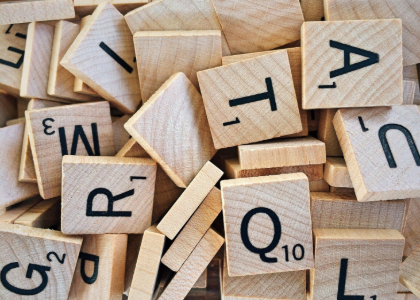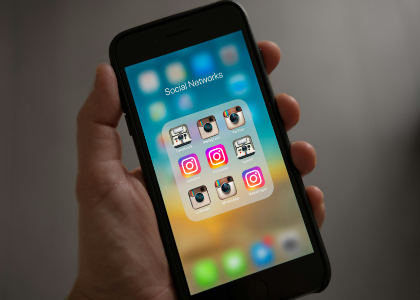Blog

Analyzing Iconic Logos for Lessons in Marketing and Design Excellence
Iconic logos are something that distinguishes a brand and makes it unique - they are masterclasses in marketing and design excellence. In this article, we will peek into the world of globally famous logos and the way they became such. You will learn their secrets right in this article.
Join us in exploring these designs, and you will discover practical insights and steps that you can personally use to enhance and improve your brand. Let's get started!
The Power of Simplicity
Sometimes less is more, and that's the case with iconic logos. It's not just about minimalism, but about embedding the essence of the brand into the design itself that will tell its own story.
Some good examples of simple yet effective logos are Apple's apple, Nike's "swoosh" line, or IBM blue letters. These logos are simple but their impact is huge. They encapsulate the brand identity in its most basic form, making them recognizable everywhere in the world.
Why does this method work well? The key is in simplicity.
The simplicity of logos ensures that they will be recognizable and memorable, which is very important in today's world, where consumers are bombarded with various images and logos. The clarity that results in easy memorability is what distinguishes the main advantage of this type of logo.
How to apply this to your brand?
Identify the key elements of your brand that you want to highlight
Discard everything that does not contribute to the clarity of your message
Clearly highlight the core message of your brand
Approach the creation of the logo as choosing a symbol that people will remember for a long time
Versatility in Design
Versatility and diversity in the world of design are the foundations of modern branding, where adaptability to different platforms is crucial. A versatile logo is effective whether it's on a billboard, a computer, or a smartphone screen. It reflects its impact and recognizability wherever it is located.
The Google logo is a good example of this type of design. It is simple but at the same time dynamic because of its colors. This makes it suitable for digital and printed media, and its clear font remains legible regardless of size.
For businesses looking to achieve this level of adaptability, exploring webflow services for enterprises can be a good idea.
To implement a versatile and diverse logo for your brand, consider these three key steps:
Prioritize Simplicity: Choose a design that is simple yet impactful.
Focus on Color and Font: Colors should be distinct, and fonts should be legible at any size.
Test Across Multiple Platforms: Ensure your logo maintains its integrity on different platforms - from digital screens to print materials.
Color Psychology in Logo Design
Color psychology plays a crucial role in logo design. It affects customer perception and brand identity, contributing to intensified emotions and associating the logo with the brand.
Each color evokes specific emotions and associations, making the choice of palette a very important segment in branding and one of the more significant marketing tools.
Examples of famous brands where the color of the logo contributes to the impact on psychology:
Coca-Cola: The red color in the Coca-Cola logo conveys energy and passion.
Facebook: A calming blue color that gives an impression of reliability and trust.
Starbucks: Green color representing growth, health, and nature.
Cadbury: Purple color that can signify luxury and creativity.
Based on these examples, we can conclude that understanding color psychology allows marketers and designers to align the brand's personality with its visual identity.
To effectively use color psychology in your logo design:
Identify the emotions and values that your brand personifies.
Choose colors that align with these traits.
Test public reaction to ensure the intended message is conveyed.
Remember, the right choice of colors can improve brand recognition and emotionally connect with your audience, transforming a simple logo into a powerful brand symbol.
The Role of Typography in Brand Identity
Typography in logo design is something that is often overlooked, but it actually has one of the biggest impacts. The font used in a logo says a lot about the brand's character.
For instance, the elegant serif font of the New York Times logo conveys tradition and credibility, while the sans-serif, modern font of Google speaks to its forward-thinking and user-friendly approach.
Moreover, typography can make or break the functionality of a logo, especially in digital contexts.
A font that scales well across various platforms ensures consistency in brand presentation. This is where integrating the best Shopify integrations becomes vital. These tools can optimize your logo for digital use, ensuring that your typography remains impactful and coherent, whether viewed on a desktop or a mobile device.
To harness typography effectively in your brand identity:
Choose a font that reflects your brand’s personality.
Ensure readability across different sizes and mediums.
Regularly assess and update your typography to stay relevant and engaging.
Remember, the right typography not only complements your brand's identity but also strengthens it, making your logo a powerful ambassador for your business.
Cultural Impact and Brand Storytelling
Cultural impact and the way a brand tells its story are key elements that highlight a logo and make it iconic. A logo can be a narrative that encompasses a brand's heritage as well as its values and aspirations.
We must mention the Starbucks logo again because, with its mythological siren, it preaches a story of mystique and the sea while aligning it with the brand's roots in Seattle and its maritime history.
Also, we must revisit the Apple logo. The bitten apple subtly suggests knowledge and discovery, pointing to the well-known mission of this brand, which is innovation and thinking differently.
Incorporating cultural impact and brand storytelling into your logo design:
Explore Cultural Symbols: Identify symbols or motifs relevant to your brand's heritage or industry that can be integrated into your logo.
Narrative Elements: Consider adding subtle elements to your logo that tell your brand's story or represent its journey.
Connect with Audience Values: Ensure your logo design aligns with the values and interests of your target audience, creating a deeper emotional connection.
By focusing on these aspects, your logo can effectively embody your brand's narrative and resonate culturally with your audience.
Innovation and Future Trends
Innovation and future trends in logo design are pivotal for staying ahead in the evolving world of marketing and design. As we venture into the future, logos are expected to become even more dynamic, interactive, and aligned with digital advancements. The integration of technology, such as augmented reality and AI, is set to redefine the way brands interact with their audience through their logos.
What to expect in the future of logo design:
Augmented Reality Integration: Logos that come to life through AR, offering immersive brand experiences.
Dynamic Logos: Designs that change based on context, platform, or user interaction.
Sustainability Focus: Logos reflecting eco-friendly practices and sustainable brand values. This shift towards sustainable logo design represents a commitment to a greener future.
Minimalism: Continued trend towards cleaner, more minimalist designs that are versatile across various mediums.
Digital Optimization: Enhanced focus on digital-friendly designs that are easily adaptable for online platforms.
Embracing these trends will not only keep your brand relevant but also ensure that your logo remains a powerful tool in your marketing arsenal.
Conclusion
In conclusion, analyzing iconic logos offers invaluable lessons in marketing and design excellence. These symbols of identity teach us the power of simplicity, versatility, color psychology, and storytelling.
Embracing these principles ensures your brand's logo not only stands out but also resonates deeply with your audience.
Remember, a well-crafted logo is a fundamental step in building a memorable and enduring brand.
More tips and tricks on the blog


